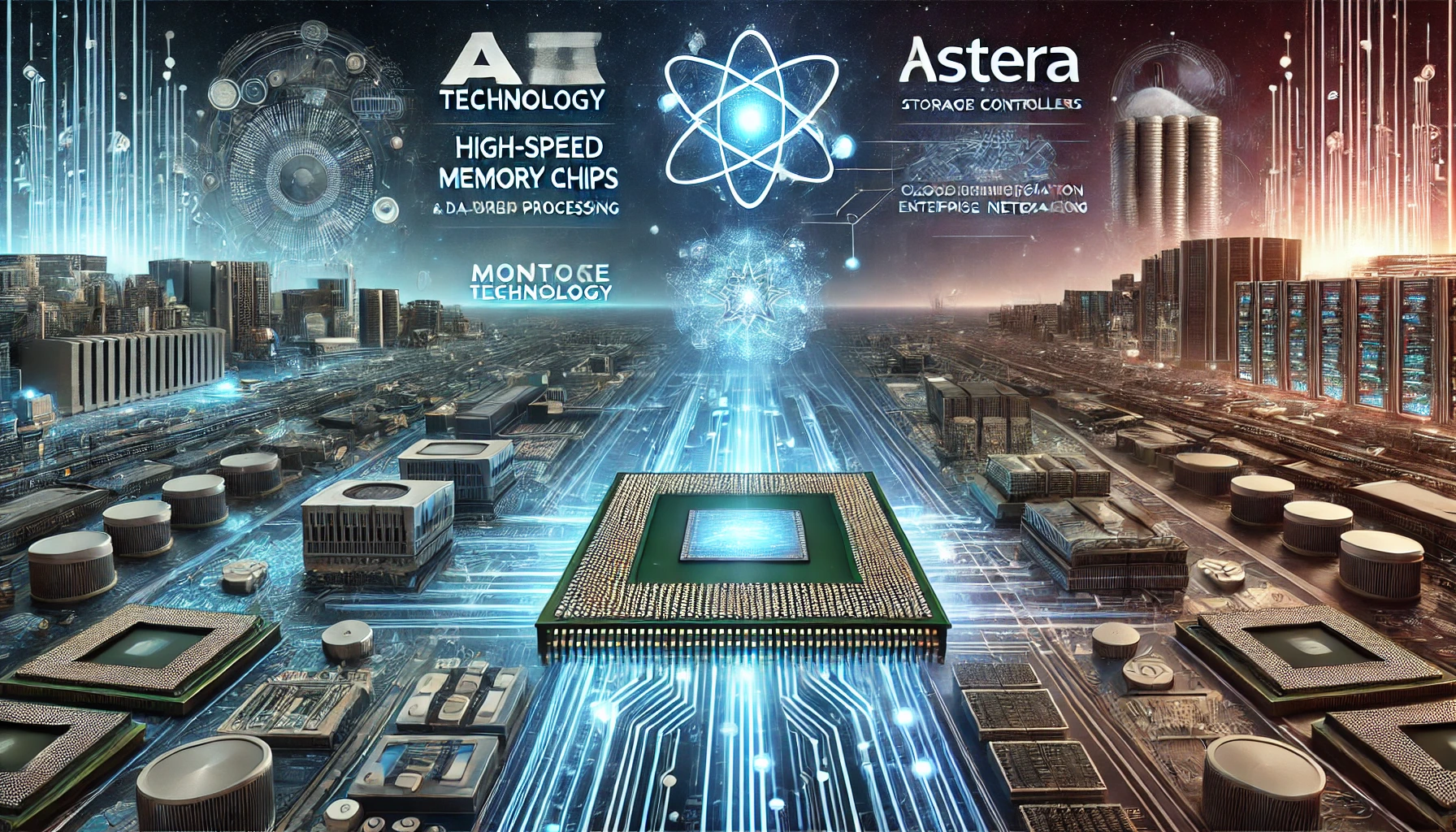Introduction
The semiconductor industry is experiencing rapid advancements, with companies striving to gain a competitive edge in areas like high-speed data processing, memory solutions, and AI-driven chip technology. Two major players in this field, montage technology competing with astera, are emerging as strong competitors. Their battle for market dominance is fueled by innovations in high-performance computing, memory solutions, and enterprise storage technologies.
In this blog, we will explore how Montage Technology competes with Astera, comparing their strengths, weaknesses, and market strategies. We will also analyze which company is better positioned for future growth and technological advancements.
Understanding Montage Technology and Astera
Montage Technology: An Overview
Montage Technology is a leading fabless semiconductor company specializing in memory interface solutions, high-speed connectivity, and AI-driven chipsets. Their primary focus is on:
- DDR memory interface chips
- High-speed interconnect solutions
- AI-powered data processing technologies
- Server and data center memory modules
The company has gained significant traction in enterprise computing, cloud services, and high-performance computing applications.
Astera: An Overview
Astera, on the other hand, is known for its innovative semiconductor solutions tailored for data centers, storage controllers, and high-performance networking. The company’s expertise includes:
- Memory and storage controllers
- High-speed data transfer technologies
- Power-efficient semiconductor solutions
- Enterprise storage acceleration
Astera has built a reputation for delivering high-performance, cost-effective, and energy-efficient semiconductor solutions, making it a tough competitor in the industry.
Key Areas of Competition
1. Memory Interface and High-Speed Connectivity
Both companies are investing heavily in memory interface solutions that support high-performance computing and AI-driven applications.
- Montage Technology has developed advanced DDR memory interface chips, which enhance data transfer rates and improve server efficiency.
- Astera focuses on optimizing storage controllers and high-speed networking to reduce latency and enhance data processing.
Who Leads?
Montage Technology holds an edge in memory solutions, particularly in the DDR interface sector, while Astera leads in storage acceleration technologies.
2. AI and Machine Learning Integration
AI-driven chipsets are revolutionizing how data is processed and managed.
- Montage Technology has integrated AI into its memory and connectivity solutions, allowing servers to handle workloads more efficiently.
- Astera is leveraging AI to optimize data storage and retrieval, ensuring faster and more efficient memory management.
Who Leads?
While Montage Technology has AI-driven memory acceleration, Astera’s AI-powered storage optimization is gaining traction in enterprise computing.
3. Market Position and Strategic Partnerships
Strategic alliances play a crucial role in a semiconductor company’s success.
- Montage Technology has partnerships with data centers and cloud computing companies to enhance its semiconductor solutions.
- Astera collaborates with enterprise storage providers, focusing on high-speed and low-latency data transfer.
Who Leads?
Both companies are securing strong partnerships, but Astera’s collaborations in the enterprise storage sector give it a competitive advantage in this area.
4. Power Efficiency and Cost Optimization
Semiconductor solutions must balance performance and power efficiency.
- Montage Technology has developed energy-efficient memory controllers, reducing power consumption while maintaining high speed.
- Astera prioritizes low-power semiconductor designs, making it an attractive choice for power-sensitive applications.
Who Leads?
Astera is slightly ahead due to its expertise in low-power solutions, making it an ideal choice for enterprises looking to reduce energy costs.
Market Growth and Future Prospects
1. Expansion into Emerging Technologies
Both companies are venturing into next-gen AI, quantum computing, and 5G connectivity.
- Montage Technology is investing in AI-powered memory processing solutions.
- Astera is focusing on next-gen storage controllers with improved efficiency.
Who Leads?
Both companies are aggressively expanding, making it difficult to predict a clear winner.
2. Revenue Growth and Market Share
- Montage Technology has seen rapid growth in memory module sales.
- Astera is expanding its footprint in enterprise storage solutions.
Who Leads?
Astera is growing faster in enterprise storage, while Montage Technology remains dominant in memory chip technology.
Conclusion: Who Has the Edge?
While both Montage Technology and Astera are strong competitors, their strengths lie in different areas:
- Montage Technology excels in memory interface solutions and AI-powered processing.
- Astera dominates in enterprise storage, high-speed connectivity, and power-efficient semiconductors.
If the focus is on memory and AI-driven computing, Montage Technology is the leader. However, for storage acceleration and enterprise computing, Astera has the upper hand.
Ultimately, the competition between these two companies will continue to drive innovation in semiconductor technology, benefiting the entire industry.
Final Thoughts
Montage Technology and Astera are shaping the future of high-performance computing and storage. As they compete, we can expect faster, more efficient, and cost-effective semiconductor solutions that will revolutionize industries like cloud computing, AI, and enterprise storage.
Which company do you think will come out on top? Share your thoughts in the comments!







Leave a Reply